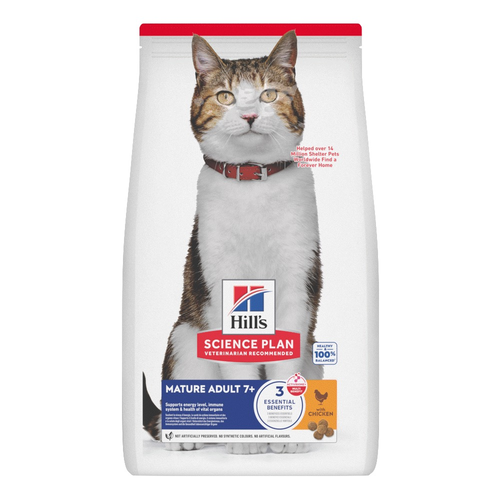
-
Find the right food for your petTake this quiz to see which food may be the best for your furry friend.Find the right food for your petTake this quiz to see which food may be the best for your furry friend.Featured products
 Large Breed Adult Dog Food
Large Breed Adult Dog FoodHill's Science Plan Large Breed Adult Dog Food with Lamb & Rice is a complete pet food, specially formulated with ActivBiome+ Multi-Benefit Technology.
This food is specifically designed to fuel the energy needs of large breed dogs during the prime of their life.Shop Now Adult Light Dog Food
Adult Light Dog FoodHill's Science Plan Light Adult Wet Dog Food is a complete premium pet food for adult dogs that tend to gain weight easily. This deliciously smooth loaf is formulated to deliver the appropriate amount of energy to support weight maintenance in adult dogs.
Shop Now Perfect Digestion Large Breed Puppy Food
Perfect Digestion Large Breed Puppy FoodPrecisely balanced nutrition with Hill's ActivBiome+ prebiotic blend actively contributes to supporting digestive health and overall wellbeing to help your pet feel their best
Shop NowFeatured products Sterilised Adult Cat Food
Sterilised Adult Cat FoodHill's Science Plan Adult Sterilised Cat Dry Food with Salmon is specially formulated with ActivBiome+ Multi-Benefit Technology. It is a precisely balanced nutrition, tailored to meet the needs of sterilised cats, to help keep sthem lean & healthy.
Shop Now Adult Cat Food
Adult Cat FoodHill's Science Plan Adult Cat Food with Chicken is a complete pet food, specially formulated with ActivBiome+ Multi-Benefit Technology.
This food is specially formulated to fuel the energy needs of cats during the prime of their life.Shop Now CULINARY CREATIONS ADULT CAT FOOD
CULINARY CREATIONS ADULT CAT FOODHill's Science Plan CULINARY CREATIONS Adult cat food with Salmon & Carrots was formulated to provide a great-tasting experience to cats. Its delicious flavour and texture are combine with essential nutrients to support cats' optimal health during the prime time of their life. Specially formulated with high-quality salmon protein, essential taurine for heart health & balanced minerals to support kidneys & bladder.
Shop Now -
Dog
- Dog Tips & Articles
-
Health Category
- Weight
- Food & Environmental Sensitivities
- Urinary
- Digestive
- Joint
- Kidney
-
Life Stage
- Puppy Nutrition
- Adult Nutrition
- Senior Nutrition
Cat- Cat Tips & Articles
-
Health Category
- Weight
- Skin & Food Sensitivities
- Urinary
- Digestive
- Kidney
-
Life Stage
- Kitten Nutrition
- Adult Nutrition
Featured articles Pet Nutrition: What Makes "Healthy" Pet Food Healthy? | Hill's Pet
Pet Nutrition: What Makes "Healthy" Pet Food Healthy? | Hill's PetIn people, the right diet is very important. If you are eating the wrong way for your metabolism, activity level, age and lifestyle you could end up with health issues.
Read More Microchipping: The Facts | Hill's Pet
Microchipping: The Facts | Hill's PetThe government has announced that as of April 2016, all dogs in the UK must be microchipped by law.
Read More The Incredible Science Behind Your Pet's Microbiome
The Incredible Science Behind Your Pet's MicrobiomeLearn what your pet's microbiome is, how it contributes to your pet's gut and overall health, and why nutrition is important in maintaining healthy microbiomes.
Read More -


When you adopt a cat, you don't just gain a best friend; you could also be saving their life. About 3.4 million cats live in shelters waiting for adoption across the US, as reported by the American Society for the Prevention of Cruelty to Animals (ASPCA). With so many wonderful felines to choose from, getting a cat from a local animal shelter makes so much sense. Here's why:
Types of Animal Shelters
You have several options when looking for adopt your kitty.
- Local town shelters. These centers are run by municipal communities and staffed by animal control officers who pick up stray and lost animals who clearly need care. Most have very low fees to adopt a cat, but do not provide veterinary services such as vaccinations, spaying, or neutering.
- Local animal shelters. Most animal shelters house kitties either in separate enclosures communal cat habitats until adoption to ensure their well-being. Some locations provide basic vaccinations for cats—such as a rabies vaccination—as well as spaying and neutering. If they don't provide the latter service, some shelters often have a list of local veterinarians who help kitty for a nominal fee.
- Specialized cat shelters. Specialized cat shelters may take only older cats, cats whose owners have died, or cats with special needs. Some are breed-specific as well.
Each facility sets its own adoption guidelines and fees, so check with your local shelter for more information on how to adopt a cat and what you need to do before you bring her home.
Are Shelter Cats Problem Cats?
Not even close! A cat often ends up at animal shelters through no fault of her own. In fact, the most common reasons involve their former parents. They may be moving to new homes where kitty isn't allowed or going through lifestyle changes, such as a new baby or a spouse who is allergic to cats. Illness or passing of a pet parent is another unfortunate reason a cat may wind up in a shelter.
Most of the time, it's through simply unlucky circumstances. Whatever the case, most shelters gladly reveal the reason why a particular cat is up for adoption and can give advice on how to best integrate a potential pet into your home.
Why Adopt from a Shelter?
Cats in need of a new home are often the perfect choice for first-time pet parents. Most of these cats have already lived inside, and therefore know the routines of a household like yours. Animal shelters provide a wide range of kitties to choose from, as well, allowing you to find a shorthair, tabby cat, male, female—whatever attributes your heart desires.
Many shelters also take note of the temperament of resident cats and keep a record of information for owner-surrendered animals. They then use this information to help you find your best match. Knowing what to expect, or at least what a given cat has been exposed to in the past, is another great benefit of adopting an adult cat from an animal shelter.
Healthy but Curious
When looking for a great cat at your local animal shelter, a healthy cat should be your number-one priority. Healthy cats have clear eyes and noses without excessive sneezing, coughing, or mucous discharges in otherwise clean environments. Their coats should look groomed and generally free of mats, too.
Don't let this ideal keep you from falling for a curious cat, though! If she's awake when you're looking at her in the shelter, she should be daring enough to approach the ends of the cage and interact with you. A cat with this sense of adventure is one who may adjust more easily to living with your family.


Tasty Tips
The Adoption Process
Each shelter has a different process for adopting cats, so check the organization's website (or call them) for specifics before you go. The following steps are pretty common parts of the process:
- Private shelters often require forms that include a vet's name, phone number, and references. Look for a local vet even before you contact the shelter so you have this information on hand.
- All available cats are advertised online or on the shelter's website. If you see someone you like, call ahead to make sure she is still living there.
- Make an appointment to visit the shelter and meet the cat.
- Bring your driver's license or similar proof of your address and residency. You'll also need to provide cash or personal checks to pay the adoption fee.
- Some shelters offer a simple cardboard carrier so that you can bring your kitty home, but if you have your own cat carrier—usually around $25 each—bring it along. Cats should always be allowed to ride in a sturdy carrier so they don't get hurt or feel the need to escape.
- Some shelters request a twenty-four hour waiting period, so you may not be able to bring her home right away. Keep in mind that this gives you time to think about your decision, and gives the shelter time to conduct a background check that confirms you're the gentle, reliable owner you know you are.
- You may be asked to complete an adoption contract, which stipulates the conditions under which you can keep your cat. For example, you'll be required to have the cat spayed or neutered, and kept up-to-date on vaccinations. You may also be asked to bring your cat back to the shelter if you need to re-home her for any reason.
- Finally, bring your cat home. Have a litter box, food, and water bowl set up in just one room; it's helpful to keep her contained to one space of the house for the first day or two until she gets used to the environment. Provide plenty of toys and places to hide, such as a cardboard box or soft-sided sleeping cube.
Know the Costs Beforehand
Getting a cat is a lifetime commitment. As her parent and guardian, you'll be responsible for her well-being for the rest of her life. Knowing the costs and time commitments for cat ownership is an important part of the adoption process.
Adoption fees are your primary investment, and range from $10 at a town animal shelter to $100 or more from a private animal shelter that houses cats who've already been spayed or neutered. Spaying or neutering does, however, cost anywhere from $75 to $200 per animal, depending on where you live. She will also need an annual veterinary checkup and routine vaccinations. Typical costs are about $150 per year.
Cats groom themselves, but trimming their claws regularly helps keep them from scratching you or your floors (you know how much they love digging into carpet). To clip her nails at home, it's best if you have someone to help you hold her while you take trimming duty. Groomers usually charge $5 and up, depending on the cat and location. If she is a long-haired kitty, she may need regular grooming appointments with a professional to keep her coats soft and tangle-free.
The Day-to-Day
Don't forget a litter box, bowls, and toys. Expect to pay between $10 and $25 for a litter box, food bowl, and a few simple play items. A brush is also helpful to keep kitty's coat clean. As far as litter itself, plain clay or dustless products can cost at least $3 per bag. Depending on how often you change her box, expect to pay $10 or more per month.
Good-quality cat food is high in nutrients and low in fillers. Cat foods such as Science Plan are available at your pet's veterinarian or a specialty retailer. Expect to pay anywhere from $10 on up per month for cat food.
What about a time commitment? You don't need to walk your cat, but you should look forward to spending quality time each day with your adorable friend. Grooming, brushing, feeding, and simply enjoying your time with her is essential to creating that special bond with your newest family member.
Cats offer companionship, affection, and enjoyment—and ask so little in return. So, adopt a cat. As they say, this could be the start of a beautiful friendship.


One of our staff authors prepared this article for you
Related products

Hill's Science Plan CULINARY CREATIONS Adult cat food with Salmon & Carrots was formulated to provide a great-tasting experience to cats. Its delicious flavour and texture are combine with essential nutrients to support cats' optimal health during the prime time of their life. Specially formulated with high-quality salmon protein, essential taurine for heart health & balanced minerals to support kidneys & bladder.

Hill's Science Plan Adult Sterilised Cat Dry Food with Salmon is specially formulated with ActivBiome+ Multi-Benefit Technology. It is a precisely balanced nutrition, tailored to meet the needs of sterilised cats, to help keep sthem lean & healthy.

Hill's Science Plan Adult Cat Food with Chicken is a complete pet food, specially formulated with ActivBiome+ Multi-Benefit Technology.
This food is specially formulated to fuel the energy needs of cats during the prime of their life.

Hill's Science Plan Mature Adult Cat Food with Chicken is a complete pet food, specially formulated with ActivBiome+ Multi-Benefit Technology.
This food supports graceful aging in cats, providing a synergistic ingredient blend to help support energy & activity levels.
Related articles

Learn about the causes of cat dermatitis, how to spot the symptoms and the best treatment options. Visit Hill's Pet for detailed guidance and tips.

Learn how your cat's poo can be a good indicator of her overall health, including how to spot unhealthy or abnormal cat poop and what it might mean.

Cats with sensitive skin have special needs and even healthy cats can sometimes develop poor skin health. Learn more about sensitive skin symptoms in your cat, what you can do to help your pet feel more comfortable and get recommendations on sensitive skin cat food.

Understand common skin issues in cats and how to manage them effectively. Learn signs and prevention, and get care tips. Find out more at Hill's Pet.

Put your cat on a diet without them knowing
Our low calorie formula helps you control your cat's weight. It's packed with high-quality protein for building lean muscles, and made with purposeful ingredients for a flavourful, nutritious meal. Clinically proven antioxidants, Vitamin C+E, help promote a healthy immune system.
Put your cat on a diet without them knowing
Our low calorie formula helps you control your cat's weight. It's packed with high-quality protein for building lean muscles, and made with purposeful ingredients for a flavourful, nutritious meal. Clinically proven antioxidants, Vitamin C+E, help promote a healthy immune system.

